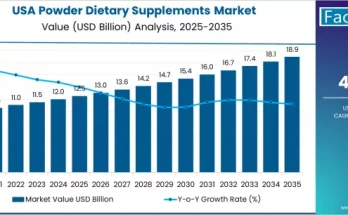The global bone and joint health supplement market is experiencing significant growth, with projections indicating a substantial increase from an estimated $34.89 billion in 2024 to $71.91 billion by 2034. This represents a robust compound annual growth rate (CAGR) of 7.5% over the forecast period.
Market Dynamics and Growth Drivers
Several factors contribute to the expansion of the bone and joint health supplement market:
-
Aging Population: The global increase in life expectancy has led to a higher prevalence of age-related musculoskeletal disorders, driving demand for supplements that support bone and joint health.
-
Lifestyle Factors: Sedentary lifestyles and poor dietary habits have contributed to a rise in conditions such as osteoarthritis and osteoporosis, further fueling the need for preventive health measures.
-
Awareness and Accessibility: Growing awareness about bone and joint health, coupled with the increased availability of supplements through various distribution channels, has made these products more accessible to consumers worldwide.
Regional Insights
-
North America: Expected to maintain a significant market share, North America is projected to account for 24.3% of the global market by 2034. The United States, in particular, is anticipated to hold a substantial portion of this share, driven by a high prevalence of musculoskeletal disorders and a strong healthcare infrastructure.
-
East Asia: Countries like China and Japan are witnessing increased demand for bone and joint health supplements. China’s market is projected to grow from $3.82 billion in 2024 to $7.89 billion by 2034, while Japan’s market is expected to rise at an 8% CAGR during the same period.
Product Segmentation
The market is segmented into various product types, including:
-
Botanical Supplements: Expected to capture 27.6% of the global market revenue share by 2034.
-
Vitamins and Minerals: Remain the most consumed category, with vitamin D and calcium supplements being particularly prevalent due to their role in bone health.
-
Amino Acids: Gaining popularity for their role in joint repair and maintenance.
-
Softgel/Pills, Powder, and Liquid Forms: Offering various consumption methods to cater to consumer preferences.
Challenges and Opportunities
Despite the positive growth outlook, the industry faces challenges such as:
-
Regulatory Hurdles: Navigating the complex regulatory landscapes across different regions can delay product launches.
-
High R&D Costs: Extensive research and clinical trials are required to develop effective supplements, leading to significant investment needs.
However, these challenges also present opportunities for innovation and differentiation in the market. Companies that can navigate these hurdles effectively are well-positioned to capitalize on the growing demand for bone and joint health supplements.
Conclusion
The bone and joint health supplement market is on a strong growth trajectory, driven by an aging global population, increasing awareness of musculoskeletal health, and a growing preference for preventive healthcare solutions. As the market evolves, stakeholders across the value chain must adapt to changing consumer needs and regulatory environments to capitalize on the opportunities presented by this expanding sector.
Browse Full Report: https://www.factmr.com/report/bone-and-joint-health-supplement-market



